
Thomas Alva Edison was an American inventor and businessman. He developed many devices in fields such as electric power generation, mass communication, sound recording, and motion pictures. These inventions, which include the phonograph, the motion picture camera, and early versions of the electric light bulb, have had a widespread impact on the modern industrialized world. He was one of the first inventors to apply the principles of organized science and teamwork to the process of invention, working with many researchers and employees. He established the first industrial research laboratory.

Lyon Sprague de Camp was an American author of science fiction, fantasy and non-fiction literature. In a career spanning 60 years, he wrote over 100 books, both novels and works of non-fiction, including biographies of other fantasy authors. He was a major figure in science fiction in the 1930s and 1940s.

George Westinghouse Jr. was an American entrepreneur and engineer based in Pittsburgh, Pennsylvania who created the railway air brake and was a pioneer of the electrical industry, receiving his first patent at the age of 19. Westinghouse saw the potential of using alternating current for electric power distribution in the early 1880s and put all his resources into developing and marketing it. This put Westinghouse's business in direct competition with Thomas Edison, who marketed direct current for electric power distribution. In 1911 Westinghouse received the American Institute of Electrical Engineers's (AIEE) Edison Medal "For meritorious achievement in connection with the development of the alternating current system". He founded the Westinghouse Electric Corporation in 1886.

Reginald Aubrey Fessenden was a Canadian-born inventor who received hundreds of patents in various fields, most notably ones related to radio and sonar.

Samuel Colt was an American inventor, industrialist, and businessman who established Colt's Patent Fire-Arms Manufacturing Company and made the mass production of revolvers commercially viable.

Elihu Thomson was an English-American engineer and inventor who was instrumental in the founding of major electrical companies in the United States, the United Kingdom and France.

Alfred Lewis Vail was an American machinist and inventor. Along with Samuel Morse, Vail was central in developing and commercializing American telegraphy between 1837 and 1844.
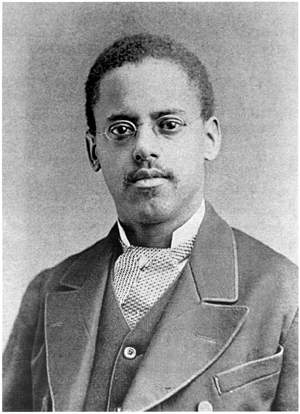
Lewis Howard Latimer was an American inventor and patent draftsman. His inventions included an evaporative air conditioner, an improved process for manufacturing carbon filaments for light bulbs, and an improved toilet system for railroad cars. In 1884, he joined the Edison Electric Light Company where he worked as a draftsman. The Lewis H. Latimer House, his landmarked former residence, is located near the Latimer Projects at 34-41 137th Street in Flushing, Queens, New York City.
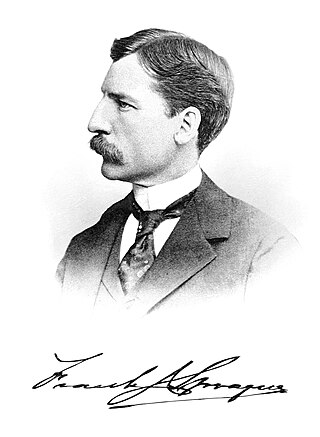
Frank Julian Sprague was an American inventor who contributed to the development of the electric motor, electric railways, and electric elevators. His contributions were especially important in promoting urban development by increasing the size cities could reasonably attain and by allowing greater concentration of business in commercial sections. He became known as the "father of electric traction". Demonstrating an aptitude for science and mathematics, Sprague secured an appointment to the U.S. Naval Academy in 1874 and, after graduation in 1878 and 2 years at sea, resigned to pursue his career in electrical engineering.
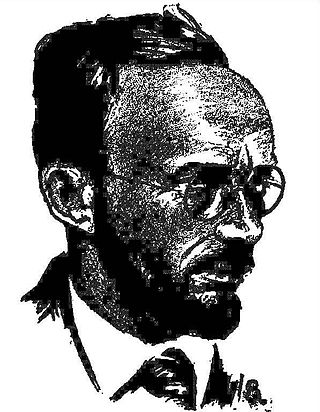
Murray Fletcher Pratt was an American writer of history, science fiction, and fantasy. He is best known for his works on naval history and the American Civil War and for fiction written with L. Sprague de Camp.
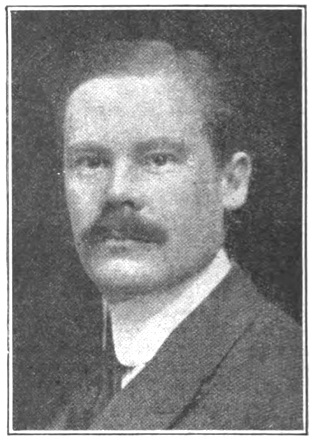
Ernst Frederick Werner Alexanderson was a Swedish-American electrical engineer, who was a pioneer in radio and television development. He invented the Alexanderson alternator, an early radio transmitter used between 1906 and the 1930s for longwave long distance radio transmission. Alexanderson also created the amplidyne, a direct current amplifier used during the Second World War for controlling anti-aircraft guns.

Beulah Louise Henry was an American inventor whose extensive contributions to consumer products and manufacturing technology solidified her legacy in the field. Born in Raleigh, North Carolina,
and later based in New York City, Henry was a pioneering figure who held 49 patents and developed over 110 inventions, significantly advancing technology while breaking gender barriers in her field.
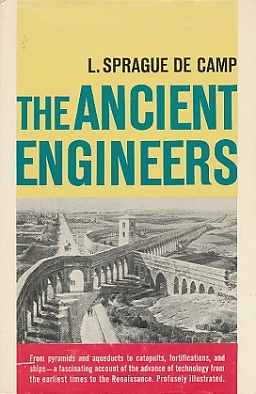
The Ancient Engineers is a 1963 science book by L. Sprague de Camp, one of his most popular works. It was first published by Doubleday and has been reprinted numerous times by other publishers. Translations into German and Polish have also been published. Portions of the work had previously appeared as articles in the magazines Fate, Isis and Science Digest.

The Story of Science in America is a 1967 science book by L. Sprague de Camp and Catherine Crook de Camp, illustrated by Leonard Everett Fisher, published by Charles Scribner's Sons. It has been translated into Spanish, Portuguese, Burmese and French.
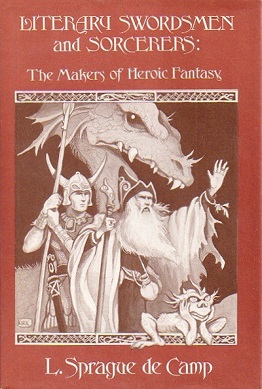
Literary Swordsmen and Sorcerers: The Makers of Heroic Fantasy is a work of collective biography on the formative authors of the heroic fantasy genre by L. Sprague de Camp (1907–2000), first published in 1976 by Arkham House in an edition of 5,431 copies. Nine chapters (2–10) are revisions from a series of ten articles, also titled "Literary Swordsmen and Sorcerers," that initially appeared in the magazine Fantastic and the fanzine Amra between 1971 and 1976. A French edition was issued in May 2010 under the title Les pionniers de la fantasy, and an ebook edition was issued in June 2014 by Gateway/Orion.

Inventions and Their Management is a science book by Alf K. Berle and L. Sprague de Camp. It was based on A Course on Inventing and Patenting by Howard Wilcox and Alf K. Berle, a series of nine papers presented by New York University in cooperation with Inventors Foundation, Inc., issued from 1933-1934. The Berle/de Camp version was published by the International Textbook Company in July 1937. It was reprinted, revised, in September 1940. A second edition was issued by the same publisher in April 1947 and was reprinted, revised, in January 1948, with a third printing in June 1948 and a fourth in June 1950. A third edition was issued by the same publisher in November 1951 and was reprinted, revised, in 1954. An additional printing was issued by Laurel Publishing in 1957. The work was revised and reissued under the new title Inventions, Patents, and Their Management by Van Nostrand in 1959. It was reprinted by Litton Educational publishers in 1968. The work has been translated into Japanese.

The Naval Consulting Board, also known as the Naval Advisory Board, was a US Navy organization established in 1915 by Josephus Daniels, the Secretary of the Navy at the suggestion of Thomas Alva Edison. Daniels created the Board with membership drawn from eleven engineering and scientific organizations two years before the United States entered World War I to provide the country with the "machinery and facilities for utilizing the natural inventive genius of Americans to meet the new conditions of warfare." Daniels was concerned that the U.S. was unprepared for the new conditions of warfare and that they needed access to the newest technology.
Bibliography of science fiction, fantasy, historical fiction and nonfiction writer L. Sprague de Camp:
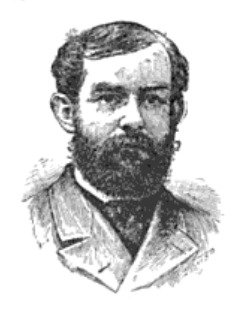
James Ogilvie Clephane was an American inventor, bar-admitted stenographer who served in Abraham Lincoln's cabinet, private secretary to Secretary of State William Seward, and venture capitalist in both Washington, D.C., and New York City. He was involved in improving, promoting and supporting several inventions during the Gilded Age, including the typewriter, the graphophone, and the linotype machine. He has been called the "father of the linotype machine", and the development of mechanical typesetting, including the first typewriter, was largely due to his initiative and investment. He is known as the "unsung hero of the development of the typewriter and Linotype."


















